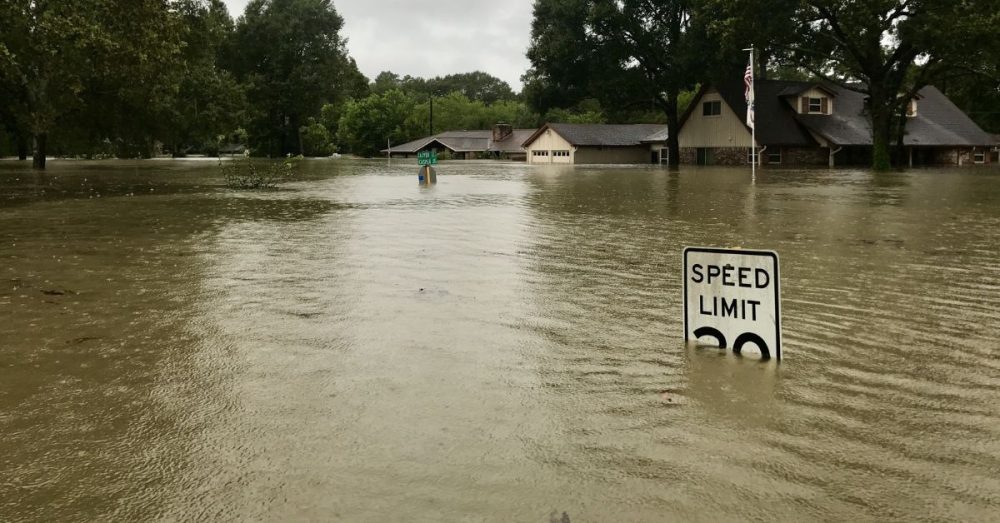With Tropical Storm Beryl (formerly Hurricane Beryl) ripping through Texas, many folks are likely reminded of past hurricanes that have battered the Lone Star State over the years.
Hurricane Harvey
The last significant hurricane to hit Texas was Harvey, a Category 4 storm that made landfall near Port Aransas on August 25, 2017. The storm directly resulted in at least 68 deaths, half of which happened in the Houston metropolitan area, per a report from HurricanScience.org.
“Harvey exploded rapidly from a tropical depression to a major hurricane in around 40 hours,” according to the National Weather Service (NWS). “Instead of moving inland and farther away from the coast, Harvey stalled over South and Southeast Texas for days, producing catastrophic devastating and deadly flash and river flooding.”
Some areas of Southeast Texas received more than 40 inches of rain in less than 40 hours. Cedar Bayou received 51.88 inches, setting a North American record, per NWS.
Over 300,000 structures were flooded, up to 500,000 cars were reported flooded, and about 336,000 customers lost power.
The storm produced 57 tornadoes, many of them in the Houston area.
The latest damage estimate from Harvey is $125 billion.
Hurricane Ike
On September 13, 2008, Hurricane Ike made landfall in Galveston with sustained winds of 110 mph, making it a strong Category 2 hurricane, according to HurricaneScience.org.
The hurricane was responsible for at least 112 deaths in the United States.
Hurricane-force winds extended 120 miles from the center, and a 15-foot storm surge stretched from Galveston to coastal Louisiana.
“Higher-than-normal water levels affected virtually the entire U.S. Gulf Coast. In addition to impacting coastal Louisiana and Texas, Ike also caused flooding and significant damage along the Mississippi coastline and the Florida Panhandle,” reported HurricaneScience.org.
Ground assessment teams determined that the surge was between 10 and 20 feet. The highest watermark, 17.5 feet, was located about 10 miles inland in Chambers County, Texas. Nearly all structures in the Bolivar Peninsula in Galveston County were destroyed.
The damages across Texas, Louisiana, and Arkansas were estimated at around $10 billion.
Hurricane Rita
Rita hit the shores of Southeast Texas and Louisiana on September 24, 2005, as a Category 3 hurricane, per NWS.
It made landfall across western Cameron Parish, east of the Texas and Louisiana border, with sustained winds of 115 mph.
Rita caused seven U.S. deaths, with over a hundred indirect fatalities reported as a result of the evacuation and aftermath, including six who succumbed to carbon monoxide poisoning while using a generator in an enclosed space in Beaumont, Texas.
Storm surge values of 12 to 18 feet were observed in Cameron Parish, Louisiana.
The Great Storm
The Category 4 hurricane in Galveston, which occurred on September 8, 1900, is still the nation’s deadliest natural disaster, per Visit Galveston.
The storm claimed between 10,000 and 12,000 lives, at least 6,000 from Galveston Island alone. Most of the deaths occurred from drowning after the 16-foot storm surge devoured the city.
As weather forecasting was not very advanced at the time, the residents did not have much of a warning that the deadly hurricane was coming.
The storm destroyed over 3,600 buildings, with damages exceeding over $20 million, per HurricaneScience.org.
Following this storm, the famous seawall was built in 1904. It started out as 3.3 miles long, 5 feet wide, and 17 feet high, but it now spans over 10 miles.
In addition, from 1904 to 1911, Galveston “underwent extensive grade-raising,” using sand pumped in from the Galveston Harbor as filler. Visit Galveston noted that this was an outstanding engineering feat for the time period.


